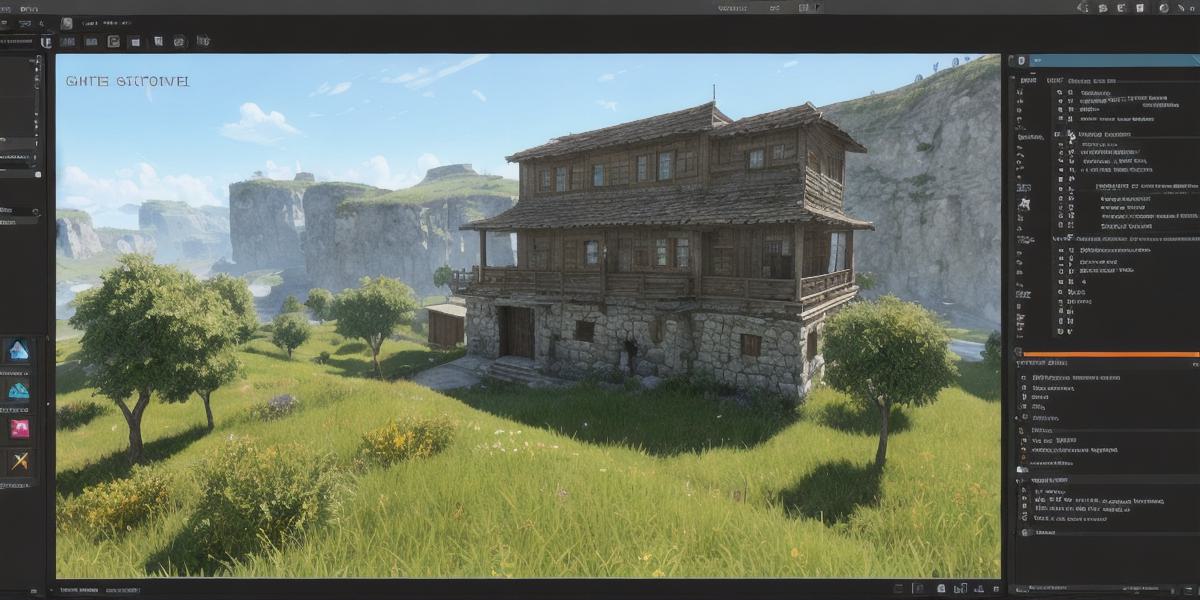game development. Understanding color theory can help you create a visually appealing game with a consistent aesthetic.

- Learn About Game Psychology: Game psychology involves understanding how players behave and interact with games. This knowledge can be used to make your game more engaging, immersive, and enjoyable for players.
- Playtest Your Game: Playtesting is the process of testing your game with real players to gather feedback and identify areas for improvement. It’s an essential step in game development that can help you refine your game and ensure it meets the needs and expectations of your target audience.
- Learn About Agile Development: Agile development is a methodology used to manage software development projects. It emphasizes flexibility, collaboration, and continuous improvement, making it well-suited for game development projects.
- Use Project Management Tools: Project management tools such as Trello, Asana, and Jira can help you organize your tasks, track progress, and collaborate with others on your game development project.
- Learn About Game Localization: Game localization involves translating your game into other languages to make it accessible to a global audience. This can greatly increase the reach and revenue potential of your game.
- Learn About Cross-Platform Development: Cross-platform development involves creating a game that can be played on multiple platforms such as Windows, Mac, iOS, and Android. This can help you reach a wider audience and increase your game’s potential for success.
- Use Version Control: Version control is a system that allows you to track changes to your code and collaborate with others on your project. It’s an essential tool for game development and can help prevent mistakes and conflicts.
- Learn About Performance Optimization: Game performance is critical to the player experience. Understanding how to optimize your game for speed, stability, and graphics quality can greatly enhance the overall gameplay experience.
- Use Sound Effects and Music: Sound effects and music are crucial elements of any game. They help immerse players in the game world and create a more engaging experience.
- Create a Game Design Document: A game design document is a detailed plan for your game that outlines its goals, mechanics, and features. It’s an essential tool for game development and can help keep you organized and on track throughout the project.
- Learn About User Interface Design: The user interface (UI) is an essential part of any game. It determines how players interact with the game and can greatly impact their overall experience.
- Use Color Theory: Color theory is the study of how colors are used in art, design, and game development. Understanding color theory can help you create a visually appealing game with a consistent aesthetic.
- Learn About Game Psychology: Game psychology involves understanding how players behave and interact with games. This knowledge can be used to make your game more engaging, immersive, and enjoyable for players.
- Playtest Your Game: Playtesting is the process of testing your game with real players to gather feedback and identify areas for improvement. It’s an essential step in game development that can help you refine your game and ensure it meets the needs and expectations of your target audience.
- Learn About Agile Development: Agile development is a methodology used to manage software development projects. It emphasizes flexibility, collaboration, and continuous improvement, making it well-suited for game development projects.
- Use Project Management Tools: Project management tools such as Trello, Asana, and Jira can help you organize your tasks, track progress, and collaborate with others on your game development project.
- Learn About Game Localization: Game localization involves translating your game into other languages to make it accessible to a global audience. This can greatly increase the reach and revenue potential of your game.
- Learn About Cross-Platform Development: Cross-platform development involves creating a game that can be played on multiple platforms such as Windows, Mac, iOS, and Android. This can help you reach a wider audience and increase your game’s potential for success.
- Use Version Control: Version control is a system that allows you to track changes to your code and collaborate with others on your project. It’s an essential tool for game development and can help prevent mistakes and conflicts.
- Learn About Performance Optimization: Game performance is critical to the player experience. Understanding how to optimize your game for speed, stability, and graphics quality can greatly enhance the overall gameplay experience.
- Use Sound Effects and Music: Sound effects and music are crucial elements of any game. They help immerse players in the game world and create a more engaging experience.
- Create a Game Design Document: A game design document is a detailed plan for your game that outlines its goals, mechanics, and features. It’s an essential tool for game development and can help keep you organized and on track throughout the project.
- Learn About User Interface Design: The user interface (UI) is an essential part of any game. It determines how players interact with the game and can greatly impact their overall experience.
- Use Color Theory: Color theory is the study of how colors are used in art, design, and game development. Understanding color theory can help you create a visually appealing game with a consistent aesthetic.
